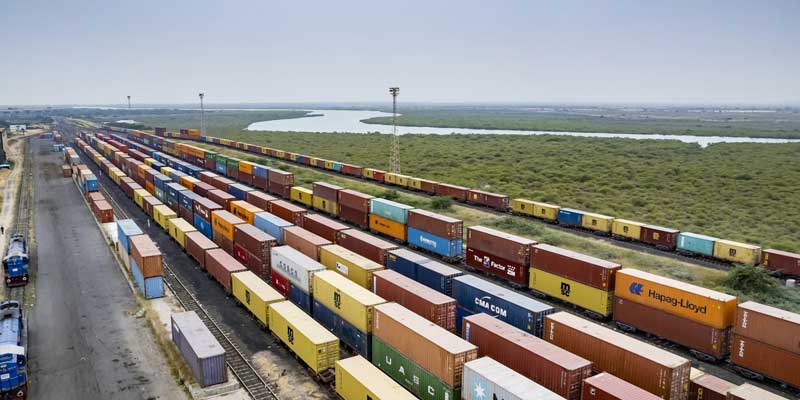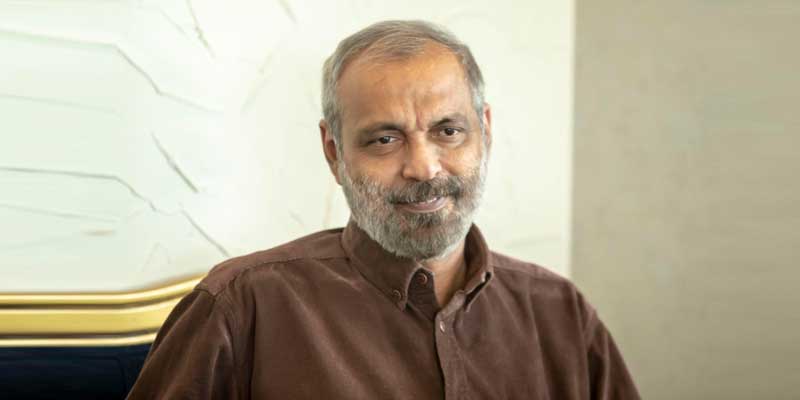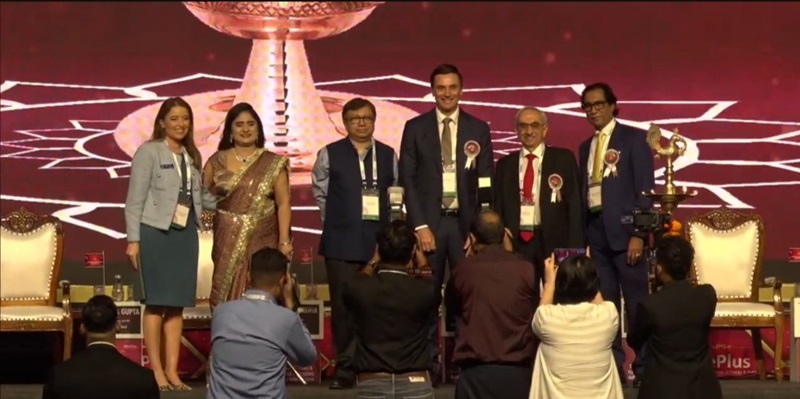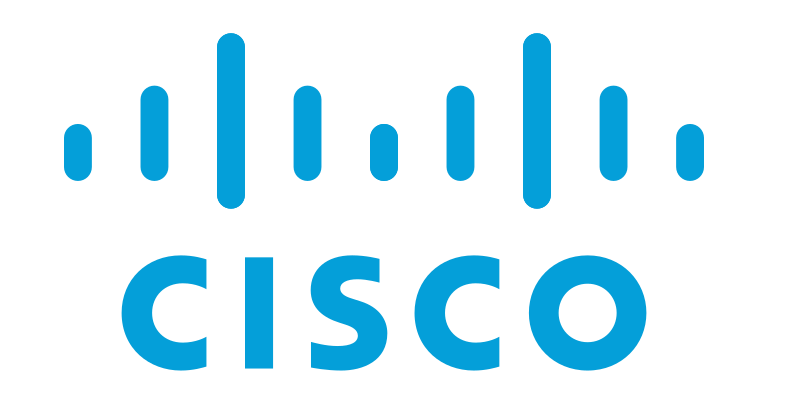Schedule a Call Back
Indian Railways offers big opportunity for suppliers with ? 2.65 trn capex
 Articles
Articles- Sep 30,24

Table 1: A decade of growth: Comparing period 2004-2014 with 2014-24
| 2004-2014 | 2014-2024 |
Cumulative freight loading | 8,473 mn tonnes | 12,660 mn tonnes |
Track laid | 15,000 km | 31,000 km |
Rail electrification | 5,000 km | 44,000 km |
Coaches produced | 32000 units | 54000 units |
Locomotive produced | 4,600 units | 9000 units |
Cumulative revenue generation | ? 8.64 trn | ? 18.56 trn |
Source: www.ETInfra.com
During 2023-24, railway witness highest ever capex utilisation of 100 per cent for ? 2.4 trillion resulting in acceleration of rail electrification, laying of new lines and tracks, doubling and gauge conversion. According to reports, the Indian Railways plans to procure 7,000-8,000 new train sets over the next 10 years to enhance passenger and domestic goods transportation capabilities.
To achieve net-zero emissions by 2030, the government targeted 100-per cent electrification of Indian Railways by December 2023. However, due to delays caused by Covid pandemic-related lockdowns and the slow progress of electrification efforts, full electrification is now anticipated by fiscal year 2027. Moonish Ghuge, President, Traction division, Motion business, ABB India Ltd, states, "The Indian railway sector has seen a remarkable transformation over the past five years. One of the most significant developments has been the rapid pace of electrification, with approximately 1,000 electric locomotives being produced annually. This electrification drive supports India’s vision of reducing its carbon footprint, while enhancing the efficiency and sustainability of rail transport."
Freight traffic
Indian Railways has developed a National Rail Plan (NRP) to establish a 'future-ready' railway system by 2030. Its goal is to build capacity ahead of demand to accommodate future growth through 2050, aiming to increase and sustain the railways' freight modal share at 45 per cent, according to a Crisil report.
Table 2: Key projects under National Infrastructure Pipeline (NIP) in Railways sector
Category | No of projects | Capex over FY20–FY25 (? trillion) |
New lines/gauge conversion | 259 | 4.40 |
Capacity augmentation | 266 | 2.48 |
Dedicated Freight Corridor | 7 | 1.66 |
Rolling stock | 31 | 2.75 |
High-speed rail | 2 | 1.11 |
Others | 159 | 1.18 |
Total | 724 | 13.58 |
Source: Report of the Task Force NIP - DEA, CRISIL Consulting
Following the mantra ‘Hungry for cargo’, Indian Railways has been focusing on bolstering cargo transportation by improving ease of doing business and offering service delivery at competitive prices. Despite a sluggish start in FY24, Indian Railways achieved a 5 per cent growth in freight traffic, moving 1.59 billion tonnes of goods compared to 1.52 billion tonnes in the previous year.
The government's initiatives like the Gati Shakti Master Plan and National Logistics Policy have prioritised rail-centric multi-modal logistics to facilitate industrial linkages and enhance supply chain efficiency. To achieve this objective, experts believe the railway sector should aim for growth rates of 1.2 to 1.5 times of the country’s GDP. Although the current growth rate is 5 per cent for 2023-24, with a 6 per cent Compound Annual Growth Rate (CAGR) in recent years, projects like the Dedicated Freight Corridor (DFC) are expected to accelerate this growth further. IR aims to increase railways' share in freight transportation from 25 per cent to over 40 per cent with DFCs. The DFC - an initiative aimed at reducing logistics costs and enhancing the efficiency of India's transport network is a cornerstone of the National Logistics Policy, designed to lower logistics costs from the current 15 per cent of GDP to a more manageable 8 per cent by 2030.
In Phase 1, the Ministry is constructing two DFCs – Eastern DFC (EDFC) and Western DFC (WDFC). While Indian Railways has completed the construction of EDFC in December 2023, over 85 per cent work on WDFC has been completed so far. Both these corridors have significantly reduced freight transportation time, attracting industries to opt for rail transport. "DFC has been commissioned and is now largely operational. This has significantly reduced the load on the main Indian Railways network, especially in terms of freight traffic. As a result, the turnaround time for freight trains on the western and eastern corridors has improved, providing better transit times and offering some level of transit time guarantee to its users," points out Sanjiv Garg, Secretary General of Chartered Institute of Logistics & Transport (CILT), who was earlier (in 2016-18) associated with Railway Board as Additional Member.
The Indian rail freight industry is witnessing substantial growth and advancements, driven by ambitious plans and increased investments to boost capacity, efficiency, and sustainability. The annual freight target is projected to rise from 1,400 million tonnes (MT) to 3,000 MT by 2027, necessitating an expansion of the wagon fleet from the current approximately 336,900 to around 500,000 by 2027. As Indian Railways' freight growth accelerates, companies anticipate higher demand for rolling stocks (wagons) in line with the upward trajectory of the rail freight sector.
Table 3: Capex for rolling stock
| Rolling Stock |
FY23 (Actuals) | ? 442.93 bn |
FY24 (BE) | ? 475.10 bn |
FY24 (RE) | ? 503.25 bn |
FY25 (BE) | ? 523.14 bn |
% change from FY24 RE to FY25 BE | 4% |
RE: Revised Estimates; BE: Budget Estimates
Sources: PRS Legislative Research; Union Budget 2024-25
Passenger coaches
Fueled by substantial budget allocation and a series of ambitious infrastructure projects, IR’s passenger rolling stock is also poised for unprecedented growth of ? 4.75 trillion over the next five years — representing a remarkable surge. To improve passenger traffic, Indian Railways has started many new trains. In February 2019, railways introduced the first Vande Bharat (VB) Express train – India’s first indigenously developed semi-high-speed train. "With the active support of the industry (which had developed or had access to latest technologies for propulsion system, brake system, bogies, etc), ICF managed to roll out the first Vande Bharat trainset (then known as Train 18) in 2018 in record 18-months. Train 18 was India's first indigenously developed semi-high speed train set that was rolled out very quickly and at low cost," opines Dr Sudhanshu Mani, who led the Train 18/Vande Bharat project in 2017-2018 as the GM ICF.
Table 4: Physical target & achievement for rolling stock capex
Head | 2022-23 | 2023-24 | 2024-25 | % change from FY24 RE to FY BE | ||
| Budget Target | Achievement | Budget Target | Revised Target | Budget Target | |
Diesel locomotives | 100 | 103 | 100 | 100 | 100 | 0% |
Electric locomotives | 1290 | 1086 | 1290 | 1280 | 1600 | 25% |
Coaches | 7551 | 5877 | 6978 | 7000 | 8405 | 20% |
Wagons (vehicle units) | 13000 | 17935 | 26000 | 23000 | 38000 | 65% |
Sources: PRS Legislative Research; Union Budget Documents
As on July 19, 2024, 102 Vande Bharat AC chair car trains are operating across the country. IR has also introduced Amrit Bharat sleeper trains in the non-AC segment. Sanjiv Garg opines, "The introduction of the Vande Bharat trains, a notable development, aims to rationalise passenger traffic by reducing slow-moving trains. Their primary advantage lies in their higher rates of acceleration and deceleration, reducing overall journey times. Over 100 VB trains are now operational across the country, reflecting the public's demand for this service."
Vande Bharat train, which has seen significant contributions from various local and global Original Equipment Manufacturers (OEMs), represents a significant departure from conventional loco-hauled passenger coaches. Ghuge explains, "One of the most notable differences is the use of distributed power, which enhances the train’s performance with higher acceleration, increased speed, and greater redundancy. Unlike conventional trains that rely on a single locomotive, Vande Bharat's distributed power configuration ensures that even if one section of the train experiences a failure, other sections can maintain operation, improving reliability and availability."
Indian Railways plans to cover 10-12 lakh km with these semi-high speed VB trains in three years. The GoI aims to launch 400 Vande Bharat train (16 coaches) in the next 3-4 years and 1,000 mini-Vande Bharat train (8 coaches) in next 3-4 years. IR is also targeting Europe, South America, and East Asia for exporting ‘Made in India’ trains. Moonish Ghuge states, "The Vande Bharat train sets are not only transforming rail travel in India but also hold significant potential for export to global markets. As Indian Railways looks to expand this technology, ABB, with its global presence and local expertise, is well-positioned to support this growth."
Indian Railways has also launched the Regional Rapid Transit System (RRTS) projects and several metro initiatives nationwide. Increase in Vande Bharat trains and metros is expected to significantly enhance the requirements for passenger rolling stocks. The railway sector is projected to grow at a CAGR of 45.94 per cent, while the metro sector is expected to expand at a CAGR of 38.57 per cent. This robust growth rate presents a golden opportunity for component suppliers to deliver high quality products essential for these initiatives. Indian Railways is expected to procure 8,000-9,000 incremental passenger coaches between FY22-26.
Table 5: Overview of rolling stock requirement
Year | Locomotives numbers | Freight wagon numbers | Passenger coaches numbers |
FY26 | 16,799 | 4,07,769 | 60,741 |
FY31 | 20,739 | 5,45,225 | 72,115 |
FY41 | 31,581 | 7,79,071 | 1,06,427 |
FY51 | 46,017 | 10,68,130 | 1,52,509 |
Source: Budget documents, CRISIL Consulting
“Except for wheels and a few critical components, all products that go into Vande Bharat trains are manufactured indigenously. Today, I think, more than 90 per cent is indigenous content. Although indigenisation has increased over the last few years, there have not been many technological upgrades in the train in the last six years," observes Dr Sudhanshu Mani.
At the same time, the government’s policy to allow 100-per cent FDI in the railway sector has helped in attracting investment from multinational companies (MNCs) who are involved in the manufacturing of rolling stock (including coaches, wagons, and their components) as well as signaling equipment, diesel and electric locomotives, and locomotive parts. Some of the major foreign collaborators active in rolling stocks in India are Alstom, Bombardier, Ansaldo STS, CAF S.A., etc.
Speed-breakers on track
Though IR has been increasing its capex in the past few years, achievement of budget target on capital works has been uneven, according to PRS Legislative Research study. For example, new line construction was significantly higher than the budget target in 2022-23 (1,815 route km against a target of 300 route km). However, it fell short by 4 per cent in 2021-22. Similarly, while the achievement on track renewals has generally been higher than budgeted, gauge conversion targets have not been met.
Despite advancements, some challenges remain in the sector. Sanjiv Garg states, "The railways continue to subsidise passenger traffic by approximately ? 600 billion annually, which is cross-subsidised by charging higher freight rates. As a result, freight services are overpriced, causing certain streams of freight traffic, which should be transported by rail, to shift to road transport. This contradicts National Transport Policy recommendations, which suggest that traffic over 400 km should move by rail."
While VB train was cleared for 160 kph speed, proliferation of tracks to support this speed has not happened. So VB trains are running at suboptimal speed at present. "Because the acceleration-deceleration is fast, Vande Bharat is able to cut down travel time. But, this is nothing compared to what it could have achieved if it was able to run at optimal speed of 160 km. While Vande Bharat was a major milestone in the development of passenger coaches in India using top-class equipment, we need to continue to strive to make it world class in terms of finish of exterior and interiors," observes Dr Sudhanshu Mani.
Countries like Japan, China, Korea, Taiwan and European Union have used advancement in the railway sector as the engine for growth of economy. Globally, railway sector market has reached a level of ? 22 trillion per year. Unfortunately, Indian Railways and its industries do not have any significant share in it. "Tremendous technological advancements have been achieved in areas like rolling stock, train communication & control, high-speed railway tracks, smart railways, and services. Indian Railways has to strive to become global leader in all of these areas, which is possible only if we strengthen our railway research and innovation ecosystem. Railway Board has taken initiative to set-up Centers for Railway Research in four IITs to harness the research and innovation skills of the IITs. Next step is to create a long-term railway research and innovation entity, fully autonomous and staffed by scientist and experts," says Dr Anirudh Gautam, Principal Executive Director (Special), Research Designs & Standards Organisation (RDSO), Lucknow.
He adds, "It is important for Indian Railways to upgrade its railway track structure to 200 kph. At present, on IR, the average speed to the passenger trains is 50 kph and of goods train is 25 kph. This has to be doubled at least if the customers continue to patronise Indian Railways. For implementation of the PM Gati Shakti master plan, IR has to act as backbone for passenger and goods movement. So enhancing the track speeds to 200 kph is very important. For faster movement of trains, reliability of the signalling systems is of utmost value. Therefore, this is also a crucial step for the growth of Indian Railways.”
Speedier progress
The industry is experimenting with new propulsion systems based on alternate fuels (such as hydrogen, biofuels, fuel cells, etc). However, some experts feel this will have no impact in India. "You cannot replace electricity with hydrogen. After making huge investment in electrification, it doesn't make any sense to invest in hydrogen technology for railways," observes Dr Mani.
Indian Railways is anticipated to introduce more trains like the Vande Bharat and Amrit Bharat models. Additionally, the ongoing Mumbai-Ahmedabad Bullet Train is likely to boost economic growth in various regions. The wagon fleet is projected to expand from 336,900 to 500,000 by 2027.
The Indian government’s significant investment in the railway sector, including plans for electrification, modernisation, and the expansion of metro rail networks, is creating new opportunities for growth and expansion. “With a focus on both freight and passenger services, electrification will accelerate further. Additionally, there will be a growing emphasis on sustainability, driven by India’s commitment to reducing greenhouse gas emissions in transportation. This will lead to increased demand for energy-efficient technologies, including advanced propulsion systems and electrification solutions,” feels ABB’s Moonish Ghuge.
Post Vande Bharat, there has not been any significant development in the train. “The next step is to design a train with speed of 240-250 kph on standard gauge. This high-speed train can also open up huge export market. To make a proto type of this high-speed train, it should take approximately three years as many things change when you go from 160 kph to 240 kph speed," states Dr Sudhanshu Mani.
According to Dr Anirudh Gautam, Vande Bharat trainset is a paradigm shift in the thought process of self-reliance. However, he states, “Vande Bharat is only the beginning, we now need to concentrate to increase the speed capacity of railway tracks, signals and the traction installation to 200 kph so that the journey times are drastically reduced and more trains can be run on the same lines to meet the needs of the populace.”
He adds, “Involvement and training of Indian Railways and private industry personnel has to be carried out on an emergency basis. IR should now work on developing high-speed trainsets capable of operating at speeds of 350 kph and also design and develop matching high-speed tracks.”
The government's substantial investment in rail infrastructure, including high-speed trains and metro systems, will create significant opportunities for ancillary industries. A S Ganeshan, Associate Vice President for Domestic Sales and Marketing, Jindal Aluminium, observes, "In the next 4-5 years, we expect to see a shift from heavy to lightweight materials in railway manufacturing, driven by the need for fuel efficiency and sustainability. Aluminium will continue to be the material of choice for future railway developments, with expanding metro rail networks and the introduction of high-speed trains like Vande Bharat and bullet trains requiring lightweight, durable materials."
To augment Vande Bharat & Metro services, strengthen freight cargo, build rail infrastructure and develop high-speed trains, the Government of India will continue to make substantial investments in the railway sector; thus, presenting a promising growth opportunity to all stakeholders in the sector.
With sustainability and energy efficiency becoming the key areas of focus, push for greener, more energy-efficient materials in train production is expected to increase in the near future. "The use of aluminium in India's railways is growing steadily. Being a lightweight material, aluminium significantly lowers energy consumption, making it an excellent choice for improving trains' overall carbon footprint. Aluminium's natural properties, such as its resistance to corrosion, ductility, malleability, and electrical and thermal conductivity, make it a sustainable and environment friendly solution. These characteristics are essential for modern high-performance trains, such as the Vande Bharat, where energy efficiency, durability, and strength are necessary for achieving top performance and safety standards," states A S Ganeshan of Jindal Aluminium.
According to Dr Sudhanshu Mani, India should start developing aluminium body for high-speed trains. Globally, aluminium is a preferred material for constructing coaches as it is lighter, it is energy-efficient. However, to manufacture aluminium coaches huge investment is required, which companies are not ready to make because of lack of clarity from the government on the future procurement of aluminium coaches. In 2022, Indian Railways floated a tender of about ? 30,000 crore for 100 trains (made from aluminium), but they cancelled the tender in 2024 citing pricing issue. According to the news report, the supplier (Alstom) was ready to supply aluminium-bodied Vande Bharat trains for ? 145 crore per train set, but railways wanted it for ? 140 crore. “The future of high-speed trains is aluminium and we are nowhere. Nevertheless, we have to work on this and I hope something is done in this direction,” states Dr Mani.
Sharing a contrary view, Sanjiv Garg says, "Though aluminium is lightweight making it energy-efficient, steel has its own advantages. In case of an accident, steel is sturdier, while aluminium is more likely to disintegrate or sustain damage more easily. Aluminium is also significantly more expensive. I would certainly recommend aluminium if we were able to recover the full cost from the passengers. So, every material has its pros and cons."
Dr Anirudh Gautam, Principal Executive Director (Special), RDSO
Vande Bharat is only the beginning, we now need to concentrate to increase the speed capacity of railway tracks, signals and the traction installation to 200 kph so that the journey times are drastically reduced.
===================================================================
Dr Sudhanshu Mani, retired GM, Integral Coach Factory
Except for wheels and a few critical components, all products that go into VB trains are manufactured locally. Although indigenisation has increased, there have not been many technological upgrades in the train in the last six years.
===========================================================
Moonish Ghuge, President, Traction Division, Motion Business, ABB India Ltd
The Indian railway sector has seen a remarkable transformation over the past five years. One of the most significant developments has been the rapid pace of electrification, with approximately 1,000 electric locomotives being produced annually.
===================================
Sanjiv Garg, Secretary General, CILT
Dedicated Freight Corridor has been commissioned and is now largely operational. This has significantly reduced the load on the main Indian Railways network, especially in terms of freight traffic.
=================================================
A S Ganeshan, Associate VP for Domestic Sales and Marketing, Jindal Aluminium
The use of aluminium in India's railways is growing steadily. Being a lightweight material, aluminium significantly lowers energy consumption, making it an excellent choice for improving trains' overall carbon footprint.
Image Courtesy: Freepik
Related Stories
IIT Bombay partners with ABB India to set up electrical machines and drives lab
The teaching lab will feature energy-efficient, mechanically coupled electrical machine sets, variable frequency drives (VFDs), and programmable logic controllers (PLCs), focusing on delivering prac..
Read more
Indian Railways offers big opportunity for suppliers with ? 2.65 trn capex
With ? 2.65 trillion capex in 2024-25, Indian railway sector presents a big opportunity for suppliers because of Vande Bharat, rising wagon demands (due to dedicated freight corridors), investments ..
Read more
Next focus of railways should be on high-speed 250-kph trains: Dr Sudhanshu Mani
In this exclusive interview with Rakesh Rao, Dr Sudhanshu Mani, the retired GM of Integral Coach Factory (ICF) who is considered the brain behind Vande Bharat, highlights on the evolution of the rai..
Read more












